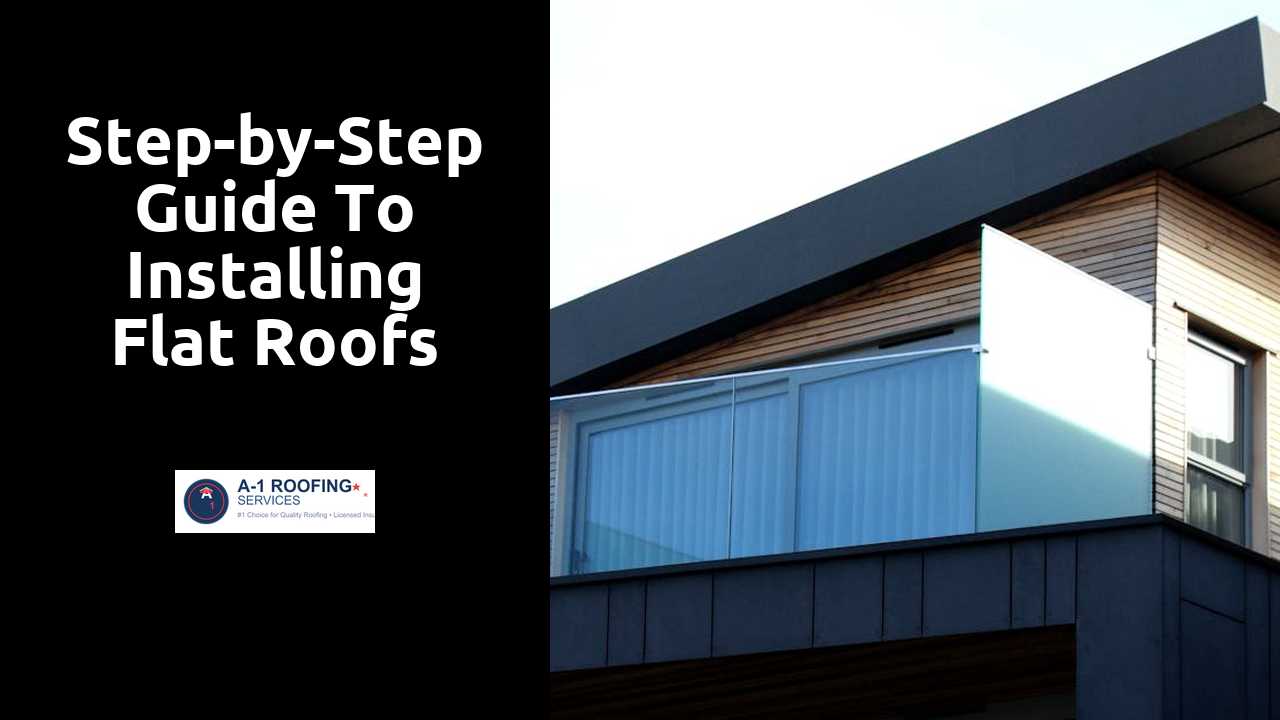
Step-by-Step Guide to Installing Flat Roofs
Table Of Contents
Preparing the Roof Surface
Before starting the installation of a flat roof, ensuring the surface is clean and prepared is essential for a successful outcome. Remove any debris, dirt, or loose materials from the existing roof surface. This may involve sweeping and using a pressure washer for a thorough clean. Inspect the roof for any structural damage or weak spots that could affect the new installation. Any necessary repairs should be addressed to establish a stable foundation for the new roofing materials.
Once the surface is clean, assess it for uneven areas or imperfections. Any dips or low spots must be leveled to prevent water pooling, which can lead to leaks and other complications. Use a leveling compound or roofing material to fill these gaps. It is also advisable to check for proper drainage and ensure that any existing drains or scuppers are clear and functional. After completing these preparations, the roof surface will be ready for the next steps in the installation process.
View this external resource for great tips and advice.
Cleaning and Repairing Before Installation
Ensuring a clean surface is essential before laying down any roofing materials. Start by removing any debris, such as leaves, dirt, or previous roofing materials. Use a broom or a blower for light debris, and consider a pressure washer for stubborn grime. Pay special attention to any clogged drainage areas, as water accumulation can lead to serious issues later. A thorough cleaning process will help to promote better adhesion for the new roofing materials.
After cleaning, inspect the roof for any damaged areas that require repair. Look for cracks, holes, or soft spots that could compromise the integrity of the new roof. Patching these areas is critical to prevent leaks and ensure a stable foundation for insulation and the waterproof membrane. Using appropriate sealants and materials to fix any damage will help extend the life of the roof and provide a reliable barrier against weather elements.
Installing Roof Insulation
Insulation plays a crucial role in maintaining energy efficiency and enhancing comfort within a building. The installation process starts with selecting the appropriate insulation material, which can vary based on climate and building requirements. Ensure the chosen insulation meets relevant building codes and standards. Once the material is on hand, check that the roof deck is clean and dry to promote proper adhesion and functionality.
Begin laying the insulation boards directly onto the roof deck, ensuring there are no gaps between them. Use a suitable adhesive to secure the boards in place, following manufacturer guidelines for application. Pay special attention to seams, as these areas may be prone to air leaks. It is vital to achieve a consistent thickness for optimal thermal performance, so measure and cut the insulation with precision to fit around any roof penetrations or obstructions.
Importance of Proper Insulation
Insulation plays a crucial role in the performance of a flat roof system. It helps regulate indoor temperatures by minimizing heat loss in colder months and reducing heat gain during warmer months. Proper insulation contributes to energy efficiency, which can lead to lower utility bills. Additionally, effective insulation prevents the formation of ice dams, which can cause significant damage over time.
Beyond energy savings, good insulation also impacts the longevity of the roofing materials. It helps prevent condensation buildup, which could lead to mold growth and structural decay. Ensuring the right amount of insulation can also enhance the comfort of the living space below. Choosing high-quality insulating materials can ultimately lead to a more durable and reliable roof system.
Applying the Waterproof Membrane
Before you begin the installation, ensure that the surface is clean and free from debris. Lay out the waterproof membrane on the roof to allow it to acclimate to the temperature. This is important for better adhesion. Measure the dimensions of the roof and cut the membrane to size, leaving a slight overlap where necessary. It’s crucial to use a high-quality membrane that meets the requirements of your specific roofing system.
When securing the membrane, start at one end and gradually work your way across the surface. Use appropriate adhesive or fasteners recommended by the manufacturer to ensure a lasting bond. Pay attention to seams and overlaps; these areas require careful sealing to prevent leaks. Consider the weather conditions during installation, as extreme heat or cold can affect the adhesive. Proper installation at this stage sets the foundation for the roof's longevity.
Step-by-Step Membrane Installation
Begin by laying out the waterproof membrane across the prepared surface of the roof. Ensure that it overhangs the edges slightly to allow for proper drainage. If using a rolled membrane, carefully roll it out in the desired direction, creating a smooth and even surface. Take care not to create wrinkles or bubbles during this process. Use a utility knife to trim any excess material as needed, maintaining a neat appearance.
Next, secure the membrane in place according to the manufacturer's instructions. This often involves using an adhesive, mechanical fasteners, or a combination of both to ensure a watertight seal. Pay special attention to seams, as these are critical points for waterproofing. Overlap the edges of adjacent membrane sheets by the manufacturer's recommended amount, and use appropriate sealants to seal any seams or penetrations. This method will ensure that the roof remains protected from water intrusion.
Related Links
Essential Tools for Flat Roofing InstallationMaintenance Tips Post-Installation for Flat Roofing